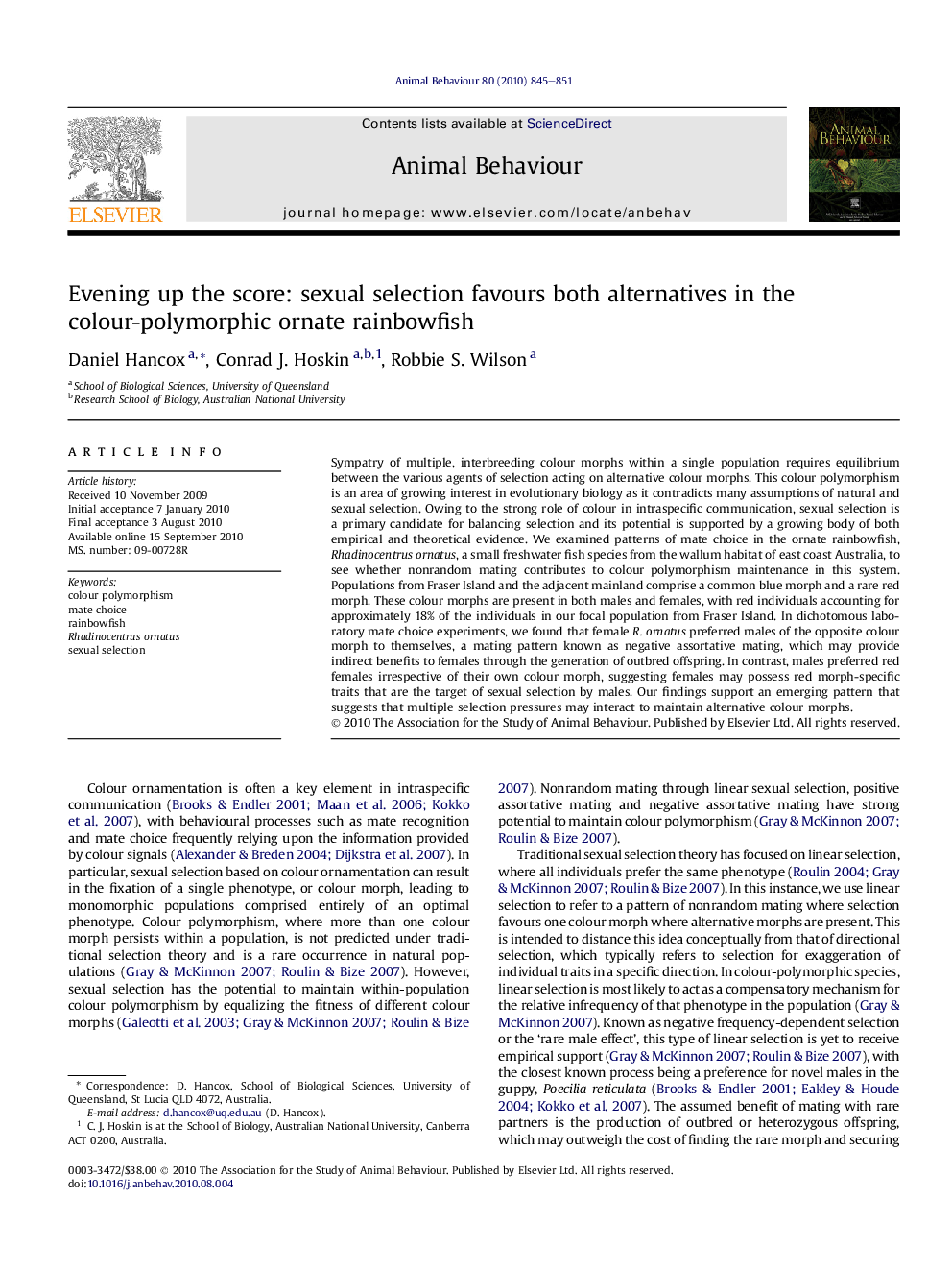| Article ID | Journal | Published Year | Pages | File Type |
|---|---|---|---|---|
| 2417172 | Animal Behaviour | 2010 | 7 Pages |
Sympatry of multiple, interbreeding colour morphs within a single population requires equilibrium between the various agents of selection acting on alternative colour morphs. This colour polymorphism is an area of growing interest in evolutionary biology as it contradicts many assumptions of natural and sexual selection. Owing to the strong role of colour in intraspecific communication, sexual selection is a primary candidate for balancing selection and its potential is supported by a growing body of both empirical and theoretical evidence. We examined patterns of mate choice in the ornate rainbowfish, Rhadinocentrus ornatus, a small freshwater fish species from the wallum habitat of east coast Australia, to see whether nonrandom mating contributes to colour polymorphism maintenance in this system. Populations from Fraser Island and the adjacent mainland comprise a common blue morph and a rare red morph. These colour morphs are present in both males and females, with red individuals accounting for approximately 18% of the individuals in our focal population from Fraser Island. In dichotomous laboratory mate choice experiments, we found that female R. ornatus preferred males of the opposite colour morph to themselves, a mating pattern known as negative assortative mating, which may provide indirect benefits to females through the generation of outbred offspring. In contrast, males preferred red females irrespective of their own colour morph, suggesting females may possess red morph-specific traits that are the target of sexual selection by males. Our findings support an emerging pattern that suggests that multiple selection pressures may interact to maintain alternative colour morphs.
